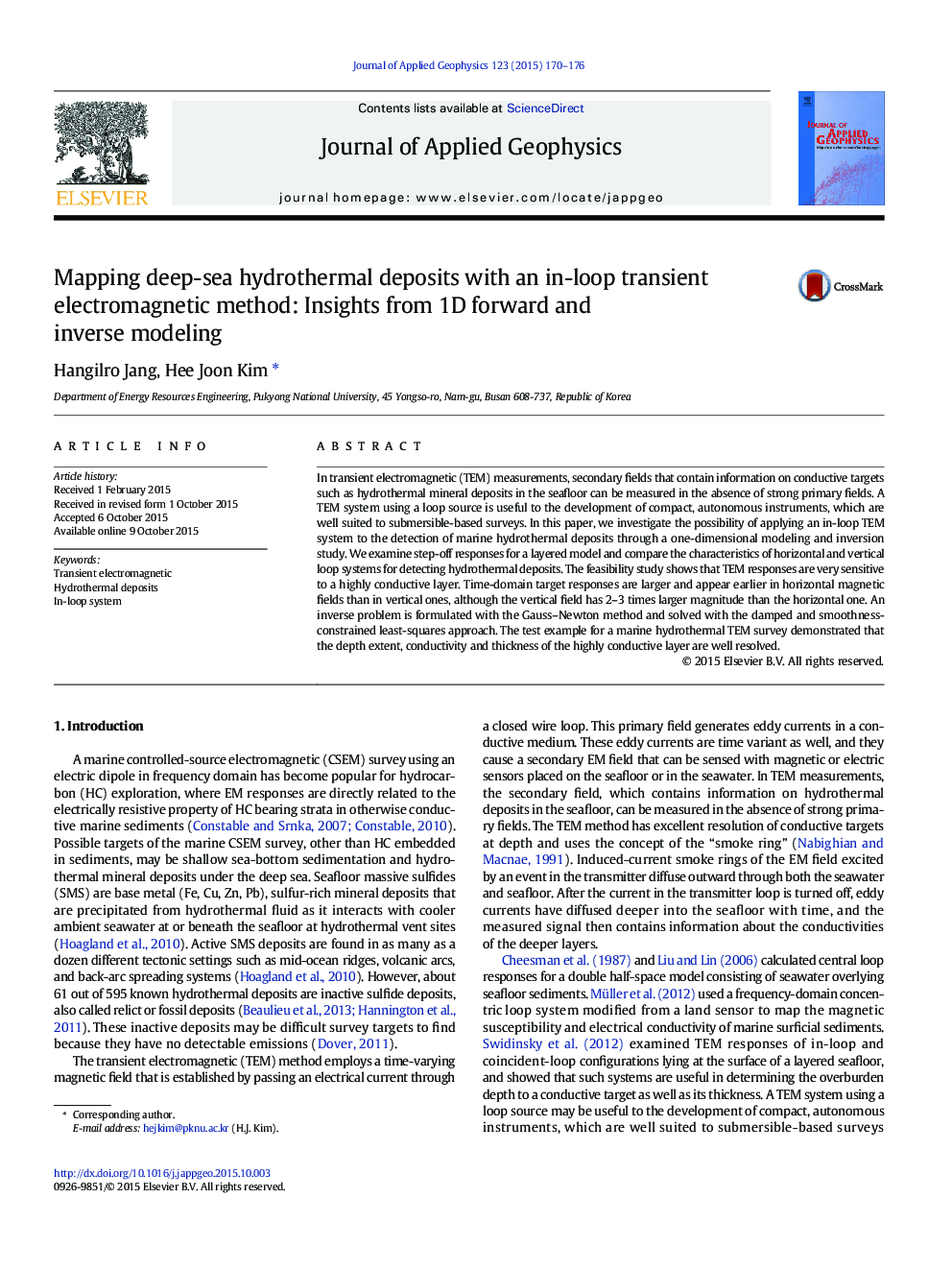| Article ID | Journal | Published Year | Pages | File Type |
|---|---|---|---|---|
| 6447052 | Journal of Applied Geophysics | 2015 | 7 Pages |
Abstract
In transient electromagnetic (TEM) measurements, secondary fields that contain information on conductive targets such as hydrothermal mineral deposits in the seafloor can be measured in the absence of strong primary fields. A TEM system using a loop source is useful to the development of compact, autonomous instruments, which are well suited to submersible-based surveys. In this paper, we investigate the possibility of applying an in-loop TEM system to the detection of marine hydrothermal deposits through a one-dimensional modeling and inversion study. We examine step-off responses for a layered model and compare the characteristics of horizontal and vertical loop systems for detecting hydrothermal deposits. The feasibility study shows that TEM responses are very sensitive to a highly conductive layer. Time-domain target responses are larger and appear earlier in horizontal magnetic fields than in vertical ones, although the vertical field has 2-3 times larger magnitude than the horizontal one. An inverse problem is formulated with the Gauss-Newton method and solved with the damped and smoothness-constrained least-squares approach. The test example for a marine hydrothermal TEM survey demonstrated that the depth extent, conductivity and thickness of the highly conductive layer are well resolved.
Related Topics
Physical Sciences and Engineering
Earth and Planetary Sciences
Geophysics
Authors
Hangilro Jang, Hee Joon Kim,
